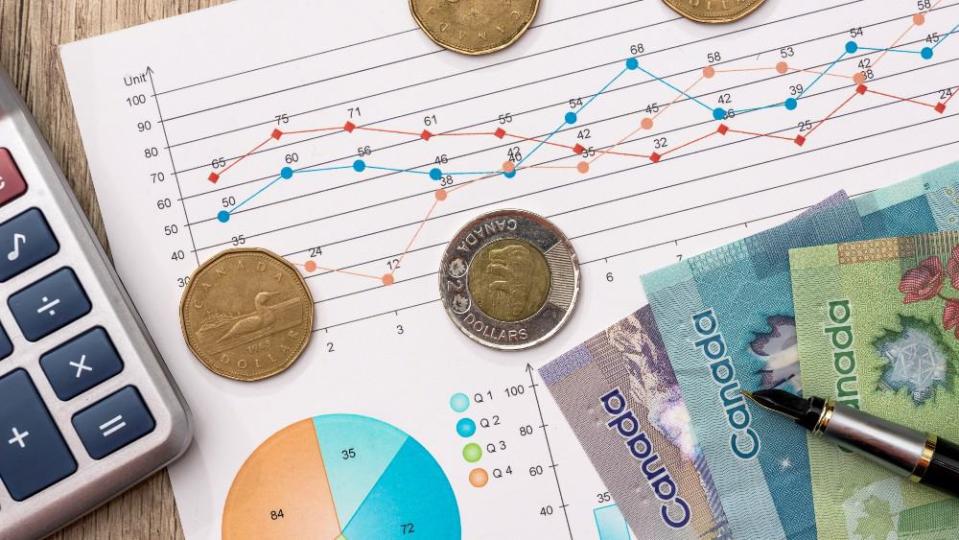1 Dividend Stock Down 25% to Buy Right Now

Written by Puja Tayal at The Motley Fool Canada
The Bank of Canada’s interest rates strongly influence the stock market, as they control the money supply in the economy. The TSX Composite Index fell almost 15% throughout the interest rate hike and looming fears of another hike. The index recovered from November 2023 (surging 13%) over hopes that the rate-hike cycle was over and rate cuts could come in 2024. But this one dividend stock is still down 25% from its April 2022 high when the rate hike began.
A dividend stock to buy at 25% discount
The stock I am referring to is BCE (TSX:BCE). While other dividend stocks that fell during the rate hike recovered in November, BCE had a tepid recovery. The telco’s estimated dividend per share for 2024 was the same as in 2023 ($3.87, or 0.9675 per quarter). It is a big thing for telco, which has grown its dividends since 2009. It last paused its dividend growth in 2008 during the Global Financial crisis.
Should you worry about the 2024 dividend pause? If you invest in BCE for the long term, you need not worry. High-interest, one-off expenses and pre-planned capital spending pulled BCE’s first-half profits into losses. Its $36 billion in net debt stressed its cash flows, as it had to allocate more cash towards servicing the debt. However, as interest rates fall, BCE would have an opportunity to restructure its debt and increase dividends.
This dividend pause and risk of debt have kept BCE’s share price down. A mild recession could pull down the stock further. However, secular trends could drive BCE’s business in the long term.
Why is this dividend stock a buy right now?
The communications sector is going through a turnaround where wireless is replacing wireline and over-the-top (OTT) is replacing cable TV. Such changes bring friction but also opportunities.
Since 2020, BCE has been on one of the most expensive technology rollouts. 5G technology opens opportunities several times bigger than 4G. The 4G long-term evolution (LTE) made video calling and live streaming possible. But 5G can make artificial intelligence (AI) and virtual reality (VR) at the edge possible. Drone deliveries and autonomous cars would be able to pick up momentum on the back of the 5G ecosystem.
Give 5G some time as companies build 5G-enabled devices and cloud capabilities. The proliferation of the Internet of Things (IoT) could expand the 5G subscriber base beyond phones to other devices. The company is tackling high debt by pausing dividend growth. If needed, it might even reduce the dividend-paying frequency from quarterly to half-yearly (as it did in 2008).
But these are short-term challenges, and BCE is well-placed to handle them. Now is the time to buy this stock in hopes of a rebound. When the debt eases, capital spending reduces, and operating efficiency kicks in, the management might share the benefits with shareholders through higher dividend growth. Buying the stock now will allow you to hop on to capital appreciation and get higher dividend growth in the future.
If history repeats itself
Let’s assume that the current scenario is a repeat of 2008, when BCE paused dividend growth and only paid dividends twice. In 2008, the interest rate was at its decade high, escalating credit risk. BCE stock fell 38% from its peak to just below $25. But when the recovery began, the stock surged 85% in three years, which is pretty high growth for a dividend stock. The company grew its dividend by 116% only for 2009.
Year | BCE Annual Dividend/share | Dividend Growth |
2024* | $3.87 | 0% |
2023 | $3.87 | 5.2% |
2022 | $3.68 | 5.1% |
2021 | $3.50 | 5.1% |
2020 | $3.33 | 5.0% |
2019 | $3.17 | 5.0% |
2018 | $3.02 | 5.2% |
2017 | $2.87 | 5.1% |
2016 | $2.73 | 5.0% |
2015 | $2.60 | 5.3% |
2014 | $2.47 | 6.0% |
2013 | $2.33 | 5.0% |
2012 | $2.22 | 8.6% |
2011 | $2.05 | 14.6% |
2010 | $1.79 | 13.0% |
2009 | $1.58 | 116.4% |
2008 | $0.73 |
|
Buying this dividend stock at a 25% discount and holding it for another 10 years is a value proposition. It can give a significant boost to your passive-income portfolio.
The post 1 Dividend Stock Down 25% to Buy Right Now appeared first on The Motley Fool Canada.
Should you invest $1,000 in BCE right now?
Before you buy stock in BCE, consider this:
The Motley Fool Stock Advisor Canada analyst team just identified what they believe are the 10 best stocks for investors to buy now… and BCE wasn’t one of them. The 10 stocks that made the cut could potentially produce monster returns in the coming years.
Consider MercadoLibre, which we first recommended on January 8, 2014 ... if you invested $1,000 in the “eBay of Latin America” at the time of our recommendation, you’d have $17,988!*
Stock Advisor Canada provides investors with an easy-to-follow blueprint for success, including guidance on building a portfolio, regular updates from analysts, and two new stock picks each month – one from Canada and one from the U.S. The Stock Advisor Canada service has outperformed the return of S&P/TSX Composite Index by 35 percentage points since 2013*.
See the 10 stocks * Returns as of 1/24/24
More reading
Can You Guess the 10 Most Popular Canadian Stocks? (If You Own Them, You Might Be Losing Out.)
How to Build a Bulletproof Monthly Passive-Income Portfolio in 2024 With Just $25,000
Fool contributor Puja Tayal has no position in any of the stocks mentioned. The Motley Fool has no position in any of the stocks mentioned. The Motley Fool has a disclosure policy.
2024

 Yahoo Finance
Yahoo Finance 